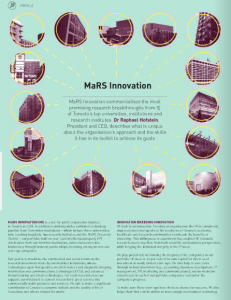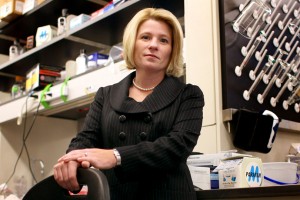MaRS Innovation featured in International Innovation magazine
 MaRS Innovation and its member institutions are is profiled in International Innovation‘s July issue (#191) in a feature interview with Dr. Rafi Hofstein, MI’s president and CEO, written by Rosemary Peters.
MaRS Innovation and its member institutions are is profiled in International Innovation‘s July issue (#191) in a feature interview with Dr. Rafi Hofstein, MI’s president and CEO, written by Rosemary Peters.
The article is posted on the publication’s website and viewable through a digital interface (pages 80 and 81).
Here’s an excerpt from Dr. Hofstein’s comments:
“Canada’s academic research community is internationally highly competitive, but it has been argued that its scientific commercial success tags behind other countries such as the U.S. and the U.K. While this remains a matter of debate, I do agree that we need to continually encourage additional sources of seed capital to join is so as to allow for accelerated advancement of early-stage technologies. Industry needs to become much more engaged in advancing early-stage (and promising!) technologies emerging from the academic sector, which are usually young and in significant attention, navigation, management expertise and seed capital provisions. These are areas of rising importance in Canada, as many innovations fall into the ‘valley of death’ due to a lack of proper funding, or they leave the country and flourish in the U.S. where funding is more abundant.







